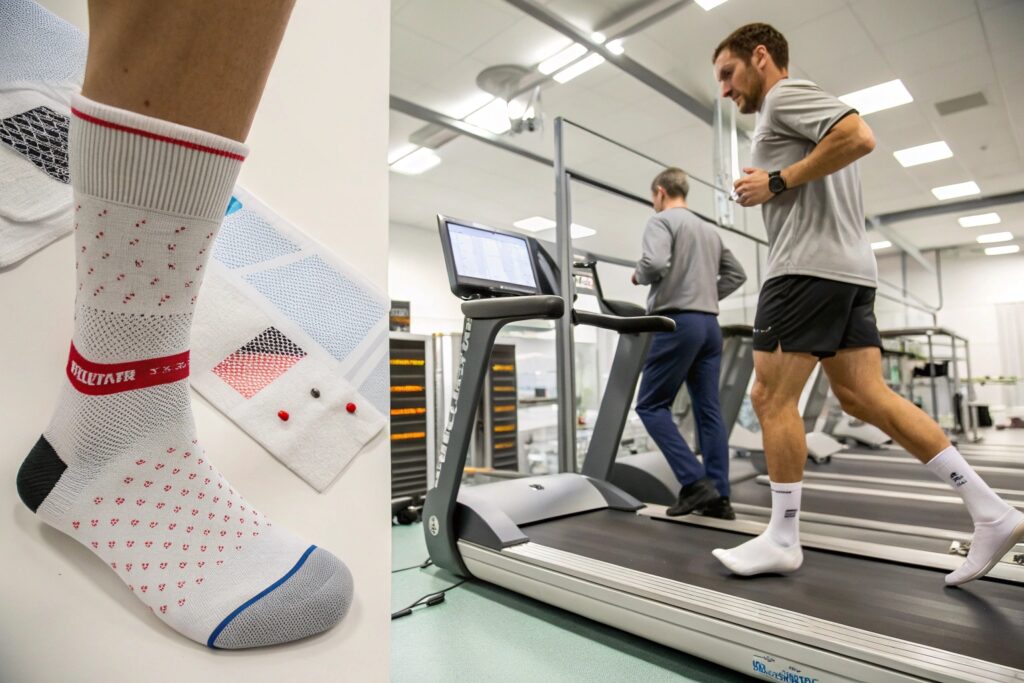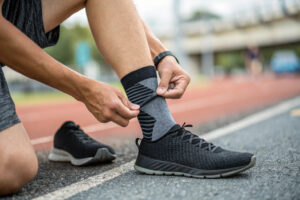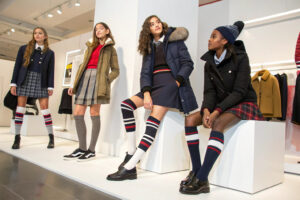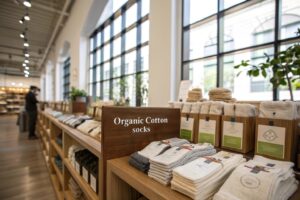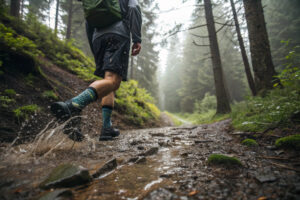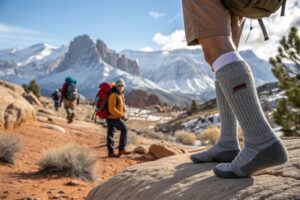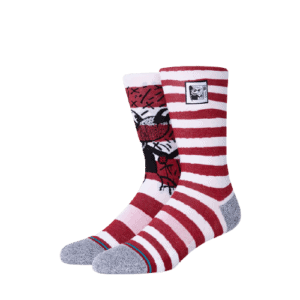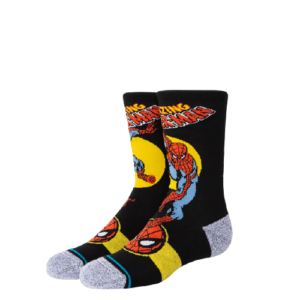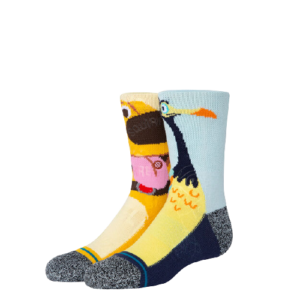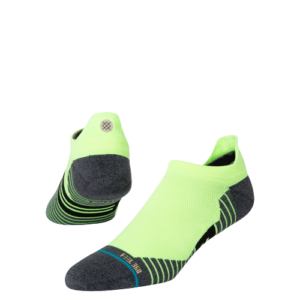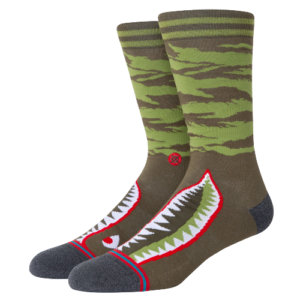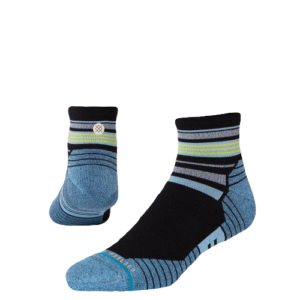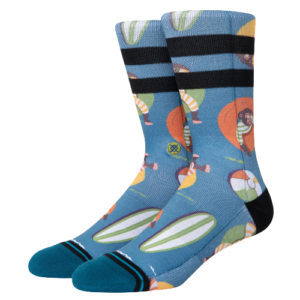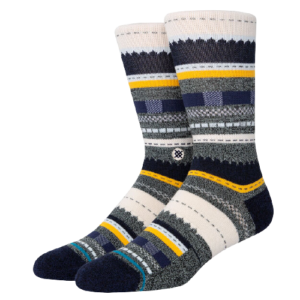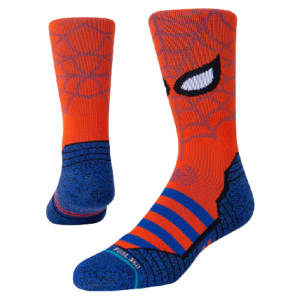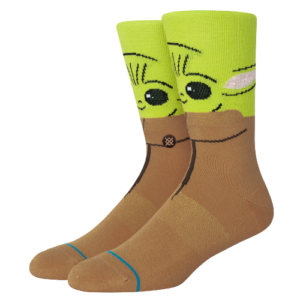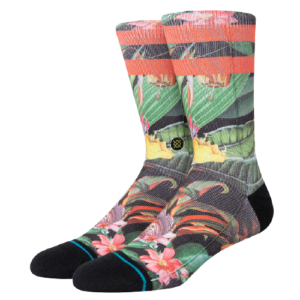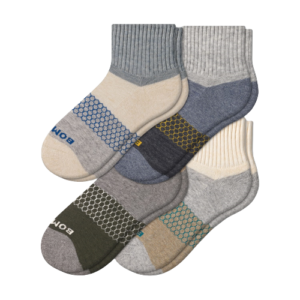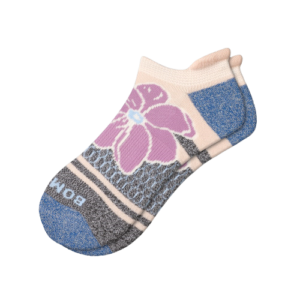If you’ve ever hiked a mountain, run a marathon, or stood all day in work boots, you know how painful blisters can be. That sharp sting from skin rubbing against your socks or shoes can turn any activity into agony. That’s where blister-prevention socks come in—and for many, they’re not just helpful, they’re essential.
Blister-prevention socks work by reducing friction, managing moisture, and providing cushioned support through engineered fabrics and layered constructions.
As a sock manufacturer working with global outdoor and athletic brands, I’ve developed and supplied many anti-blister sock lines. Let’s explore what makes them work, which materials are most effective, and how brands and retailers can meet growing demand for foot protection.
How do blisters form and how can socks prevent them?
Before you can stop blisters, you need to understand what causes them. Friction, moisture, and pressure points are the main culprits.
Blister-prevention socks reduce these risk factors using double-layer fabrics, moisture-wicking yarns, and seamless construction.
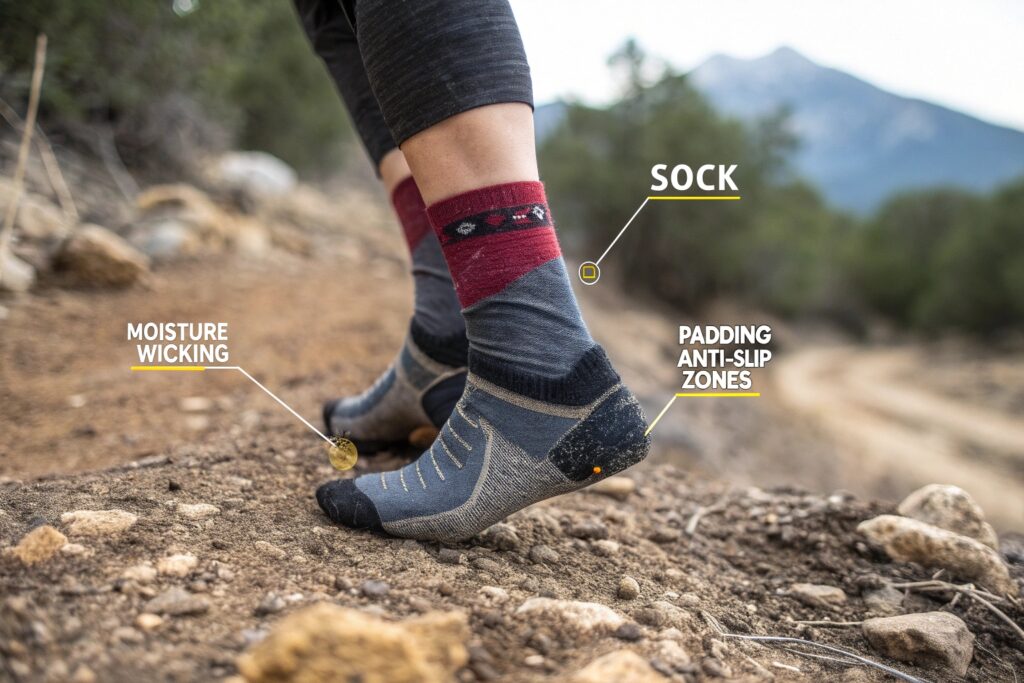
What exactly causes foot blisters?
Blisters are caused when repeated friction causes the upper layers of skin to separate, allowing fluid to accumulate. This usually happens when socks are wet, bunched up, or when shoes and socks rub against the same spot repeatedly. According to WebMD, heat, pressure, and moisture increase your chances—especially during long activity.
Socks that bunch or don’t fit properly also increase friction, especially around the heel, toes, and arch. This is where blister-prevention technology matters.
How do double-layer socks help?
Double-layer socks have a slick inner layer that moves with your foot and a durable outer layer that moves with your shoe. The friction happens between the layers—not between your sock and skin. Brands like Wrightsock pioneered this idea, but many technical brands now use similar methods with modern fibers.
We manufacture double-layer socks using soft polyester inner linings and abrasion-resistant outer fabrics, often blending in Lycra® for stretch and stability. These socks are especially popular among trail runners, hikers, and military users.
What materials are best for blister prevention?
Not all fibers are equal when it comes to preventing blisters. The wrong fabric can trap sweat and cause slippage, while the right one keeps skin cool and dry.
Synthetic blends like nylon, Coolmax, and bamboo viscose are top choices for blister-prevention socks due to their moisture control and breathability.
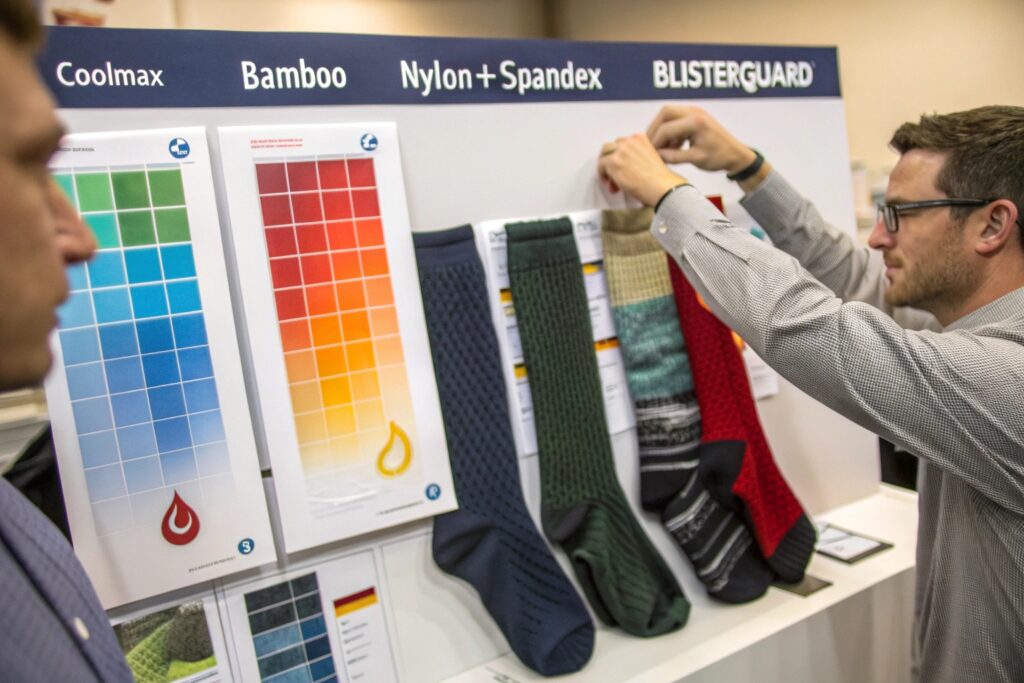
Why is moisture control so important?
Moisture is the biggest factor in blister formation. When socks get damp—either from sweat or outside conditions—your skin softens, increasing the risk of tearing and friction. That’s why elite socks for runners, soldiers, and outdoor workers use hydrophobic yarns.
We use Coolmax® fiber in many of our anti-blister designs because it pulls moisture away from skin, spreads it across the fabric surface, and evaporates it quickly. Bamboo blends are also popular for their antibacterial and cooling effects.
What sock structures improve anti-blister performance?
Aside from fabric, structure matters. We add targeted padding around the heel, toe, and ball to reduce pressure points. Flat seams and Y-heel stitching keep the sock in place. Some socks feature BlisterGuard™ technologies using PTFE (like in non-stick pans) to glide over skin without friction.
Every season, we run internal lab tests using foot simulation machines to rate fabric performance in high-friction zones. These help us improve yarn blends and advise clients on performance differences.
What types of people benefit most from blister-prevention socks?
Blister-prevention socks aren’t just for elite athletes. They’re essential for anyone who stands, walks, or trains for long hours.
Runners, hikers, nurses, warehouse workers, and even school kids can all benefit from anti-blister socks—especially during active seasons.
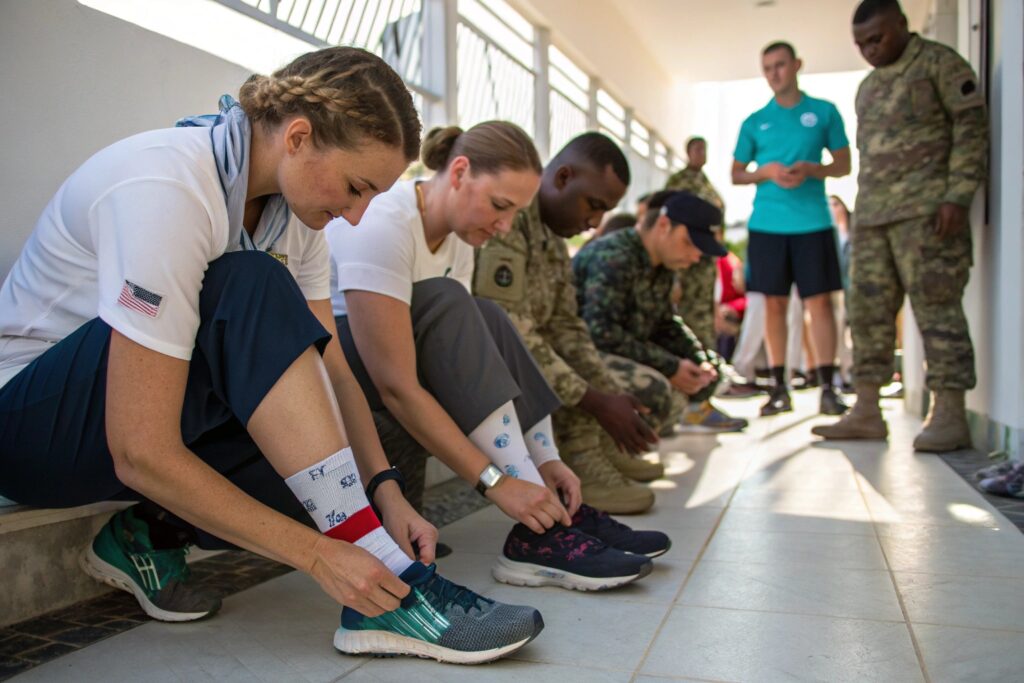
Are they just for outdoor use?
No. While trail hikers and marathon runners were early adopters, these socks are now common in occupational and everyday wear. Nurses and warehouse staff wear them during 10–12 hour shifts on hard floors. Even kids prone to blisters during school sports can benefit from them.
One of our best-selling lines last year was a blister-protection sock made for grocery chain staff—blending polyester, cotton, and reinforced mesh to handle long hours on slick surfaces.
What about medical recovery or skin-sensitive users?
For diabetes patients or post-surgery users, skin irritation must be minimized. We offer seamless toe socks with hypoallergenic fibers to reduce any friction or bunching. These are popular in elderly care and rehab clinics.
Compression variants also help prevent swelling, which can contribute to hot spots and blisters. We produce medical-compliant compression socks with moisture-wicking footbeds that serve both blister control and circulation support.
How can brands market and sell blister-prevention socks?
Blister-prevention socks have strong appeal, but you need to communicate the benefit clearly and back it with performance claims.
Use packaging, influencer storytelling, and performance diagrams to explain why your socks keep feet blister-free—then let your reviews prove it.
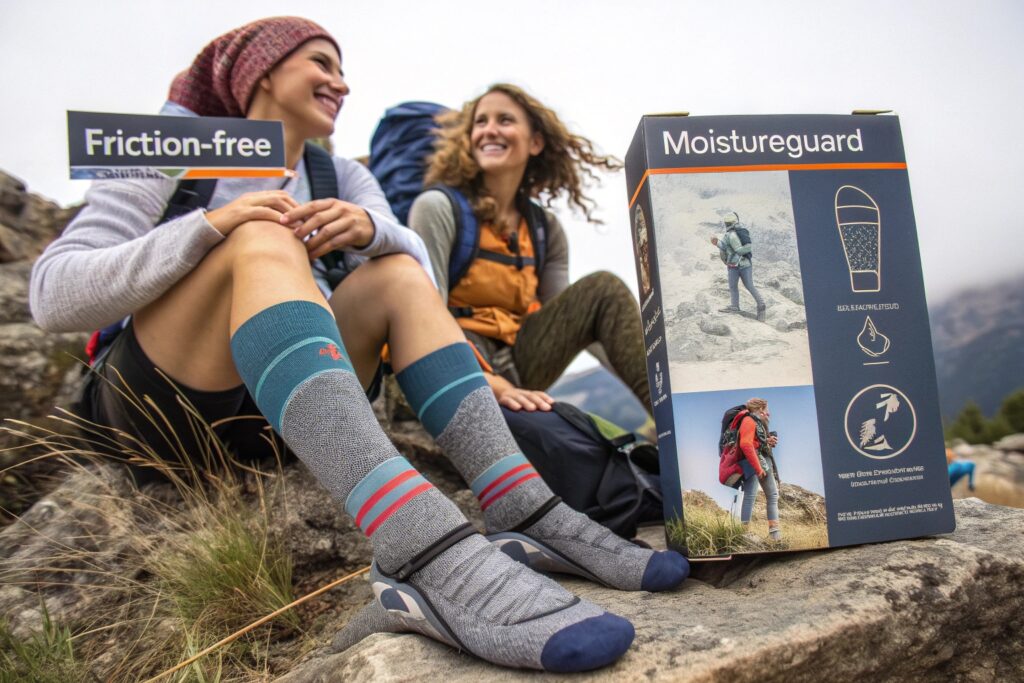
What are key selling points for retail and online?
Focus on keywords like “Friction-Reducing,” “Seamless Comfort,” “Double-Layer,” and “Moisture Control.” Use icons or graphics to explain benefits at a glance. Demonstrating in action—hiking, marathon training, or long shifts—gives instant credibility.
We offer sock sellers private-label packaging that shows fiber tech, anti-blister zones, and even QR codes linking to testimonials and tech explainers. Retailers who display the socks next to shoes also increase AOV through bundling.
How should pricing be structured?
Blister-prevention socks sell at a premium. Most buyers are willing to pay 30–50% more for pain prevention. Multipack bundles, subscription boxes, and co-branding with shoe brands are popular strategies among our clients in the EU and U.S.
We also see strong sales spikes during event seasons—marathons, school starts, or hiking season. Brands that time promotions around these events generate more traction and higher return buyer rates.
Conclusion
Blisters might seem like a small problem, but the solution—well-designed socks—can drive big value for both wearers and retailers. At GlobalSock, we’ve spent years testing, refining, and supplying blister-prevention socks to clients worldwide. From double-layer construction to Coolmax fabrics and seamless finishing, these socks prove that the smallest details can prevent the biggest pain. Whether you’re a performance gear brand or just want to upgrade your sock collection, blister-free comfort is something your customers will feel—and thank you for—with every step.

